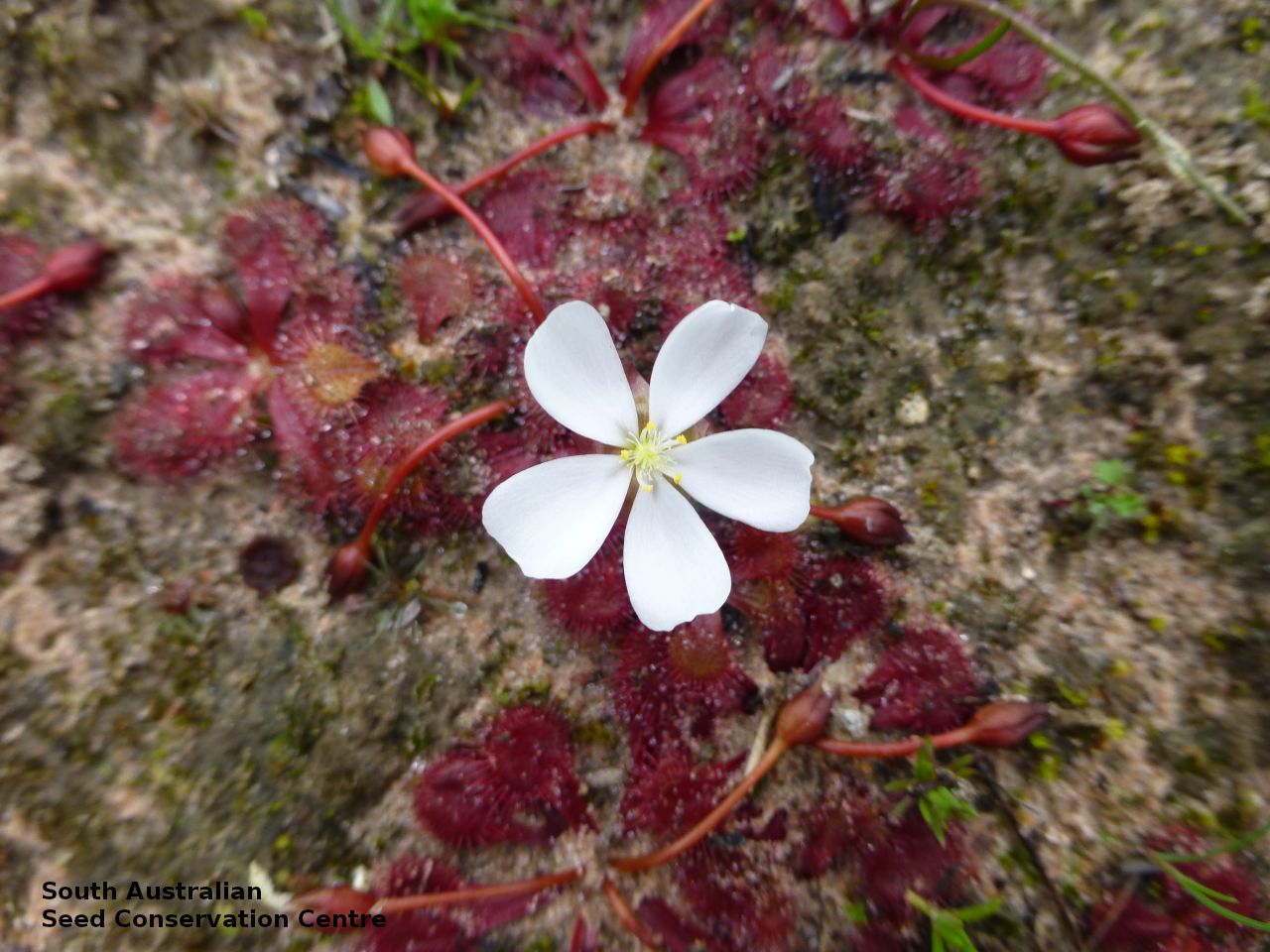
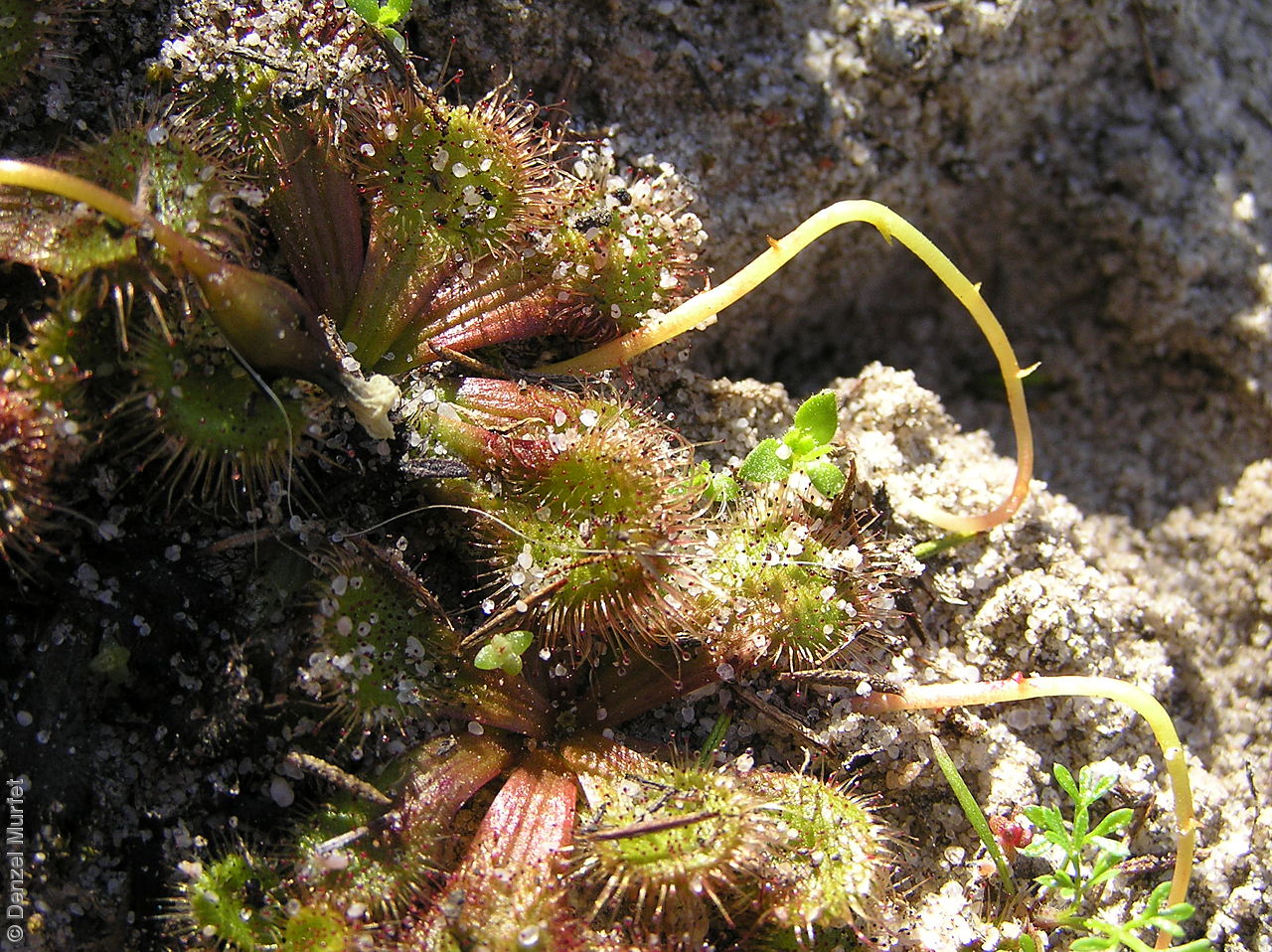
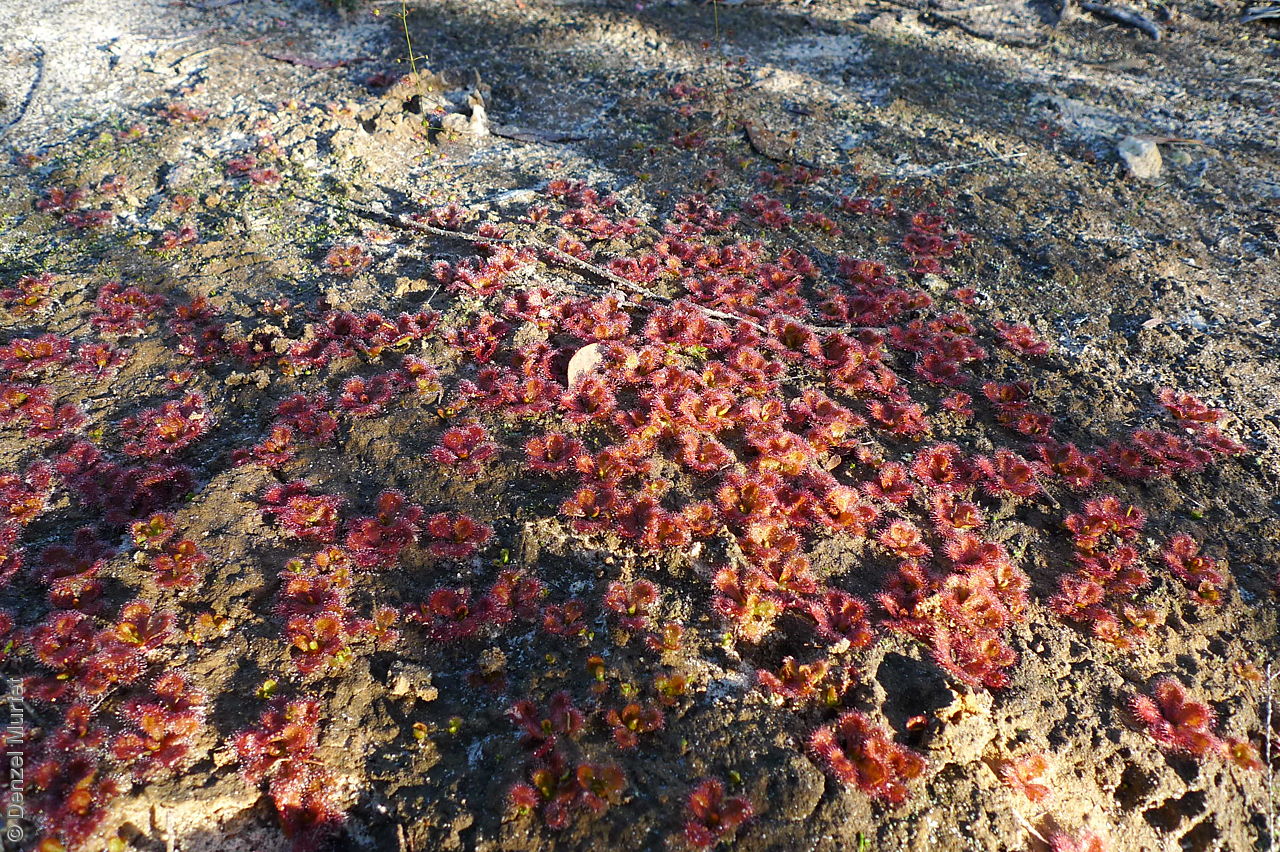
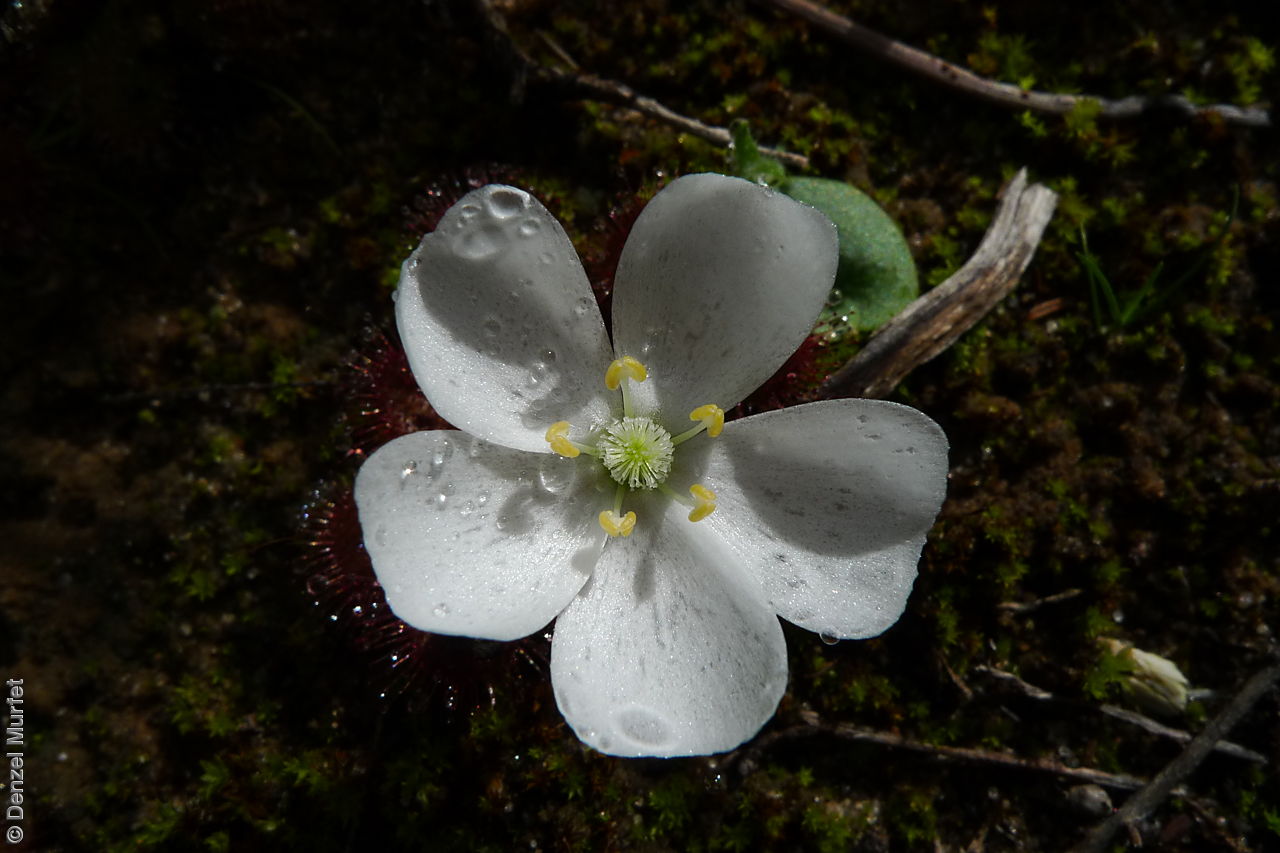
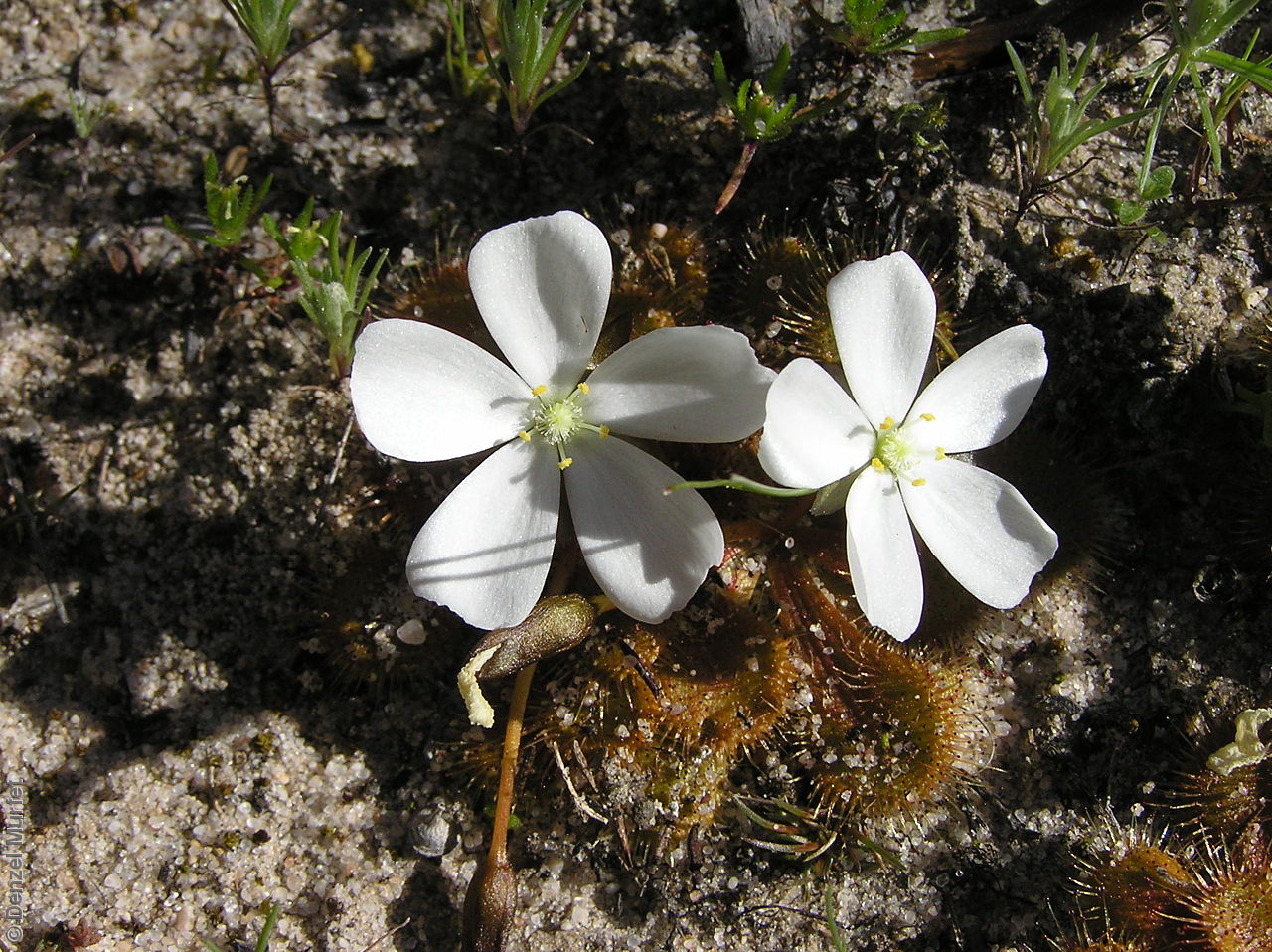
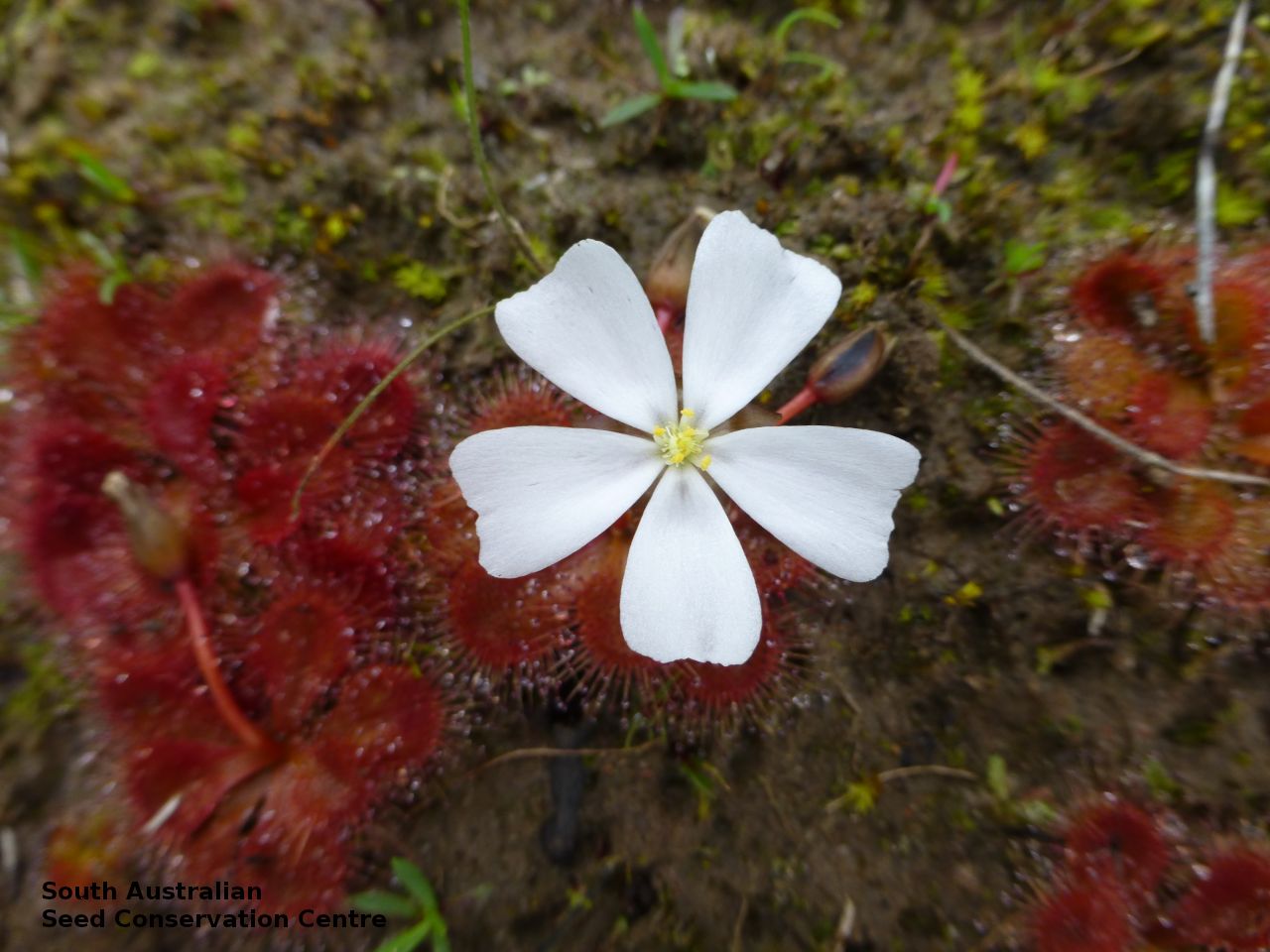
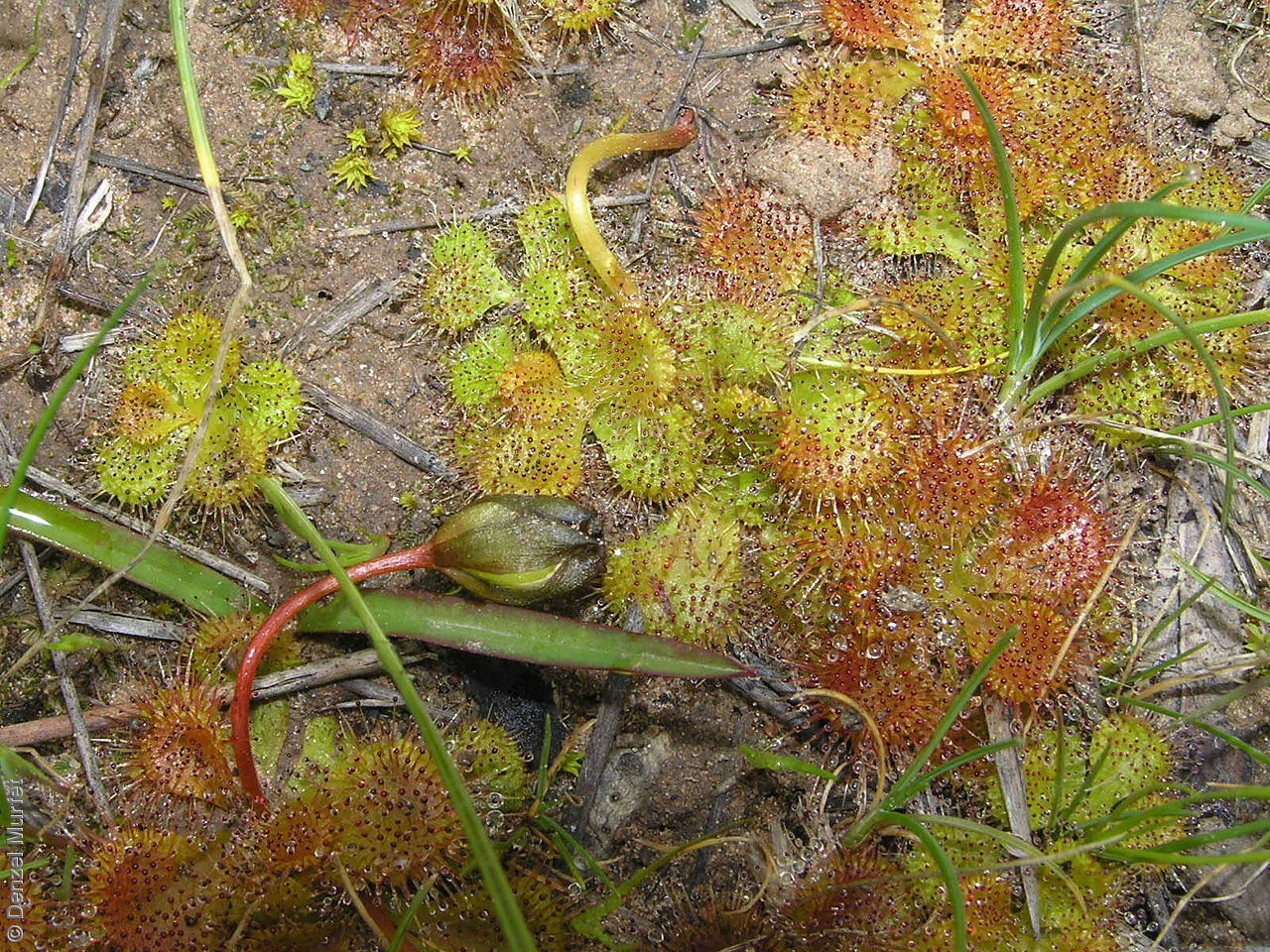


Botanical art
Prior names
Drosera whittakeri ssp. aberrans
Etymology
Drosera from the Greek 'droseros' meaning dewy, alluding to the glistening hairs of the glandular leaf laminae. Aberrans from Latin meaning to deviate or astray from the norm, alluding to its colony-forming morphology of this species compared to D. whittakeri which have no stolon, which it was previously treated.
Distribution and status
Found in the South-east of South Australia from around Murray Bridge to Mount Gambier, growing in heathlands and open forests on a range of soils. Also found in New South Wales and Victoria. Native. Common in South Australia. Rare in New South Wales. Common in Victoria.
Herbarium regions: Murray, South Eastern
NRM regions: South Australian Murray-Darling Basin, South East
AVH map: SA distribution map (external link)
Plant description
Perennial, geophytic, colony-forming herb with a red stem tuber enclosed by multi-layered black sheath. Leaves annual in a flat rosette, green or red, broadly spathulate to 35 mm long and 15 mm wide. Flowers white, up to 7. Flowering between July and September. Fruits are green- brown ovoid to globose capsule to 8 mm diameter. Seeds are black angular ovoid-cylindrical seed to 1.5 mm long, with a mesh-like surface.
Seed collection and propagation
Collect seeds between September and November. Collect mature capsules, those that are fat, hard, turning brown and contain black seeds inside. Place the capsules in a tray and leave to dry for one to two weeks. Then rub the capsules gently by hand to dislodge the seeds. Use a sieve to separate the unwanted material. Store the seeds with a desiccant such as dried silica beads or dry rice, in an air tight container in a cool and dry place.